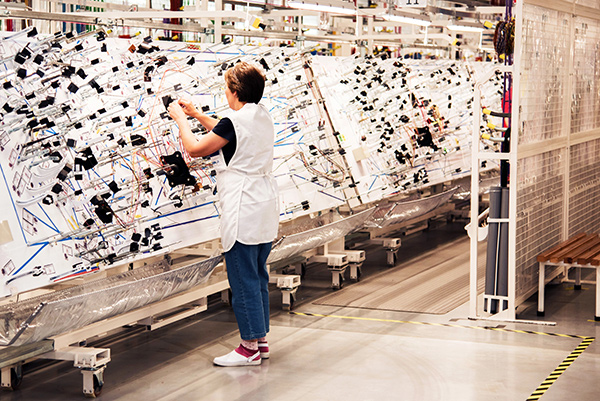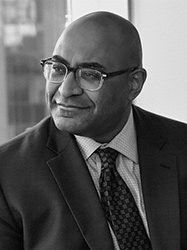America’s OEM surge hinges on tier-2 and 3 suppliers; with bank credit tight, patient private capital is the missing link to real capacity.
By Charles Corpening
America is attempting a second industrial revolution, or at least a once-in-a-generation buildout. Manufacturing construction outlays are running near a $226 billion seasonally adjusted annual rate as of June 2025. In 2024, companies announced about 244,000 reshoring/FDI manufacturing jobs. Registered apprenticeships have scaled from roughly 360,000 active participants in 2015 to over 667,000 in 2024. Add to that federal incentives, for example, Intel’s CHIPS award of up to $7.865 billion and roughly $188 billion in announced EV/battery manufacturing commitments, and “build back better” and “made in America” are proving to be more than just catchy campaign slogans.
At the core of this American return to industry are original equipment manufacturers (OEMs), the firms that design the product, own the brand and customer, and integrate the final system from a network of suppliers. They manufacture software-defined, electrified machines such as EVs and drivetrains, AI computers, advanced aircraft, and grid hardware, on modular platforms they control.
But these OEMs need tier-2 and tier-3 manufacturers for the less glamorous but essential guts of hardware—precision castings and forgings, stampings, injection-molded plastics, machined parts, PCB assemblies, wiring harnesses, fasteners, and the tooling/jigs that hold it all together. For years much of that work was offshored for labor-cost arbitrage, access to dense supplier clusters, and lower landed costs.
Many OEMs are now nearshoring to cut lead times, meet USMCA content thresholds, and reduce tariff exposure. But nearshoring can be the worst of both worlds: once you factor in U.S. tariffs, cross border logistics, FX volatility, and working capital drag, landed costs can spiral out of control. In those cases, relying on domestic feeder manufacturers makes the most sense, especially for short runs, tight tolerances, and IP-sensitive parts.
America has world-class OEMs and tier-1s, but the tier-2/3 base is thin, especially in castings/forgings, PCB/PCBA, wiring harnesses, precision machining, and tooling, leaving single point of failure suppliers and long import tails. Until that feeder network is capitalized and scaled at home, OEMs can’t run a closed domestic loop.
America’s feeder network is being bottlenecked in terms of capital. Bank standards have barely loosened and rates remain high, so many mid-market suppliers are shelving or shrinking the very investments OEMs need.
In the face of that, private credit and private equity have been stepping in to fill the gap. Direct lenders now cover the bulk of sponsor-backed deals, peaking around 93% in 2023. Unitranche and ABL-style facilities, often with delayed draw tranches for tooling and inventory, better match the cadence of tier-2 and 3 manufacturing.
When a private equity firm steps in to back a middle market supplier, the first move is structural. They carve a 200-person machining unit out of a conglomerate, clear the debt so cash stops going to interest, and set a simple financing plan that funds operations. Day one, they stand up basic systems, e.g., accounting, purchasing, scheduling; hire a plant lead with authority; and spend where it counts: a few inspection machines, fixtures, and an automation cell at the slowest step. They add a modest line of credit for tooling and inventory so the shop can handle an influx of OEM orders. In six to nine months, the past-due pile shrinks, lead times come down, on-time delivery percentages move into the 90s, and there’s a visible buffer of trained personnel, so a surge doesn’t swamp operations.
Scale comes next, but that’s scale with purpose. Instead of scattering sites, the financial sponsor adds two logical pieces, a harness maker and a small PCB assembler, so the platform ships a tested sub-assembly, not three separate parts. Quality checks and change control are standardized across the group; purchasing is combined where it actually saves money. A private credit facility funds practical efficiency work: motor and drive upgrades, heat-loss fixes, basic robotics on repetitive tasks, and a straightforward power contract that lowers electric bills. Unit costs fall, scrap drops, and energy use declines enough to meet customers’ sustainability targets.

The company becomes a dependable feeder with growing share at each OEM, and the investor owns a stronger, lower-risk supplier that strategic buyers will pay up for.
Here are a few very recent, concrete examples. In January 2025, Wynnchurch Capital bought aluminum extruder Astro Shapes, a classic feeder manufacturer, and has since supported a follow-on acquisition to expand capacity. In June 2025, Centerbridge Partners agreed to acquire precision-machining group Precinmac, underscoring sponsor interest in complex, tight-tolerance components. Also in 2025, KPS Capital Partners exited Hussey Copper to International Wire Group—useful as a lifecycle example of sponsor ownership in metals and electrical components.
Middle-market manufacturers shouldn’t wait for a private equity bailout. Here’s how they should shore up their fundamentals in the meantime.
Close the books monthly and stand up a simple KPI pack (on-time delivery, first-pass yield, scrap/DPPM, OEE, cash conversion). Clean up routings/bills of materials (BOMs) so costs are real, and run a steady S&OP cadence so schedules hold. Reduce fragility: document Production Part Approval Process (PPAP) and change control, clear the preventive-maintenance backlog, diversify the top three customers where you can, and build bench depth in critical roles.
Then, improve working capital before you ask for more: shorten Day Sales Outstanding (DSO), right-size inventory to actual lead times, and renegotiate vendor terms tied to volume or forecast accuracy. Do an energy audit and fund quick wins (leaks, drives, controls) that cut utility bills. Put governance in place such as basic board reporting, a light data room, clean contracts, to ease the due diligence process.
None of this requires a buyout, but doing it makes the plant more resilient now and far more attractive to capital that can sustain growth.
America won’t rebuild industrial depth one plant at a time; it takes regional ecosystems. Every mid-market supplier revitalized with private equity capital should slot into local pipelines: community college apprenticeships feeding certified welders and machinists; supplier councils that share production part approval process (PPAP) and engineering change (ECR) templates; utilities offering predictable rates for electrification upgrades. Sponsors can anchor a platform in one metro, add two adjacent capabilities, and let shared services lift all three. OEMs can steer steady releases into those clusters and pre-qualify new capacity faster. Do this repeatedly, region by region, and the U.S. can once again outcompete China, India, and Germany in OEM-heavy sectors.

About the Author:
Charles Corpening is Managing Partner and Chief Investment Officer of West Lane Partners, a private equity firm focused on middle market firms in infrastructure, industrials, healthcare and financial services.
In this episode, I sat down with Beejan Giga, Director | Partner and Caleb Emerson, Senior Results Manager at Carpedia International. We discussed the insights behind their recent Industry Today article, “Thinking Three Moves Ahead” and together we explored how manufacturers can plan more strategically, align with their suppliers, and build the operational discipline needed to support intentional, sustainable growth. It was a conversation packed with practical perspectives on navigating a fast-changing industry landscape.